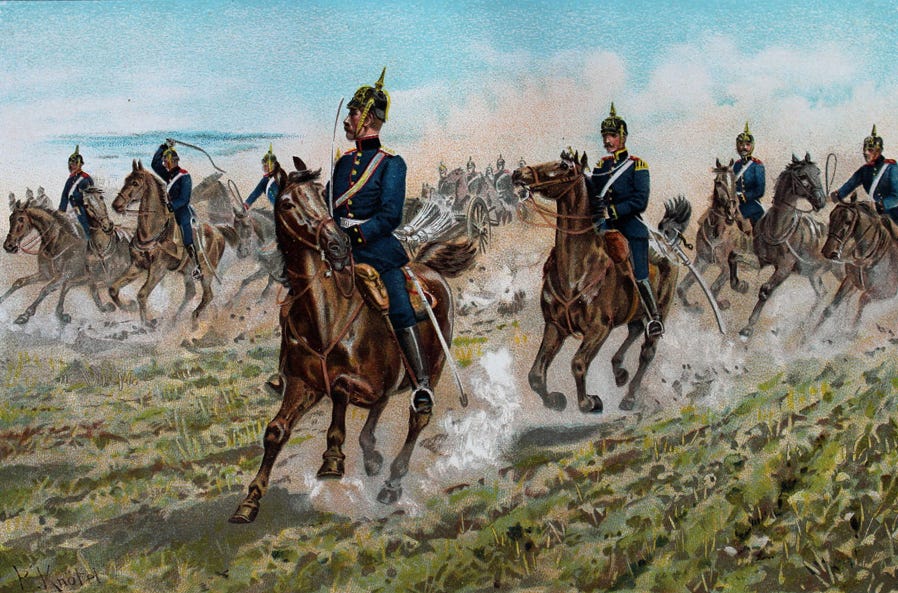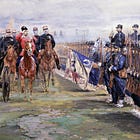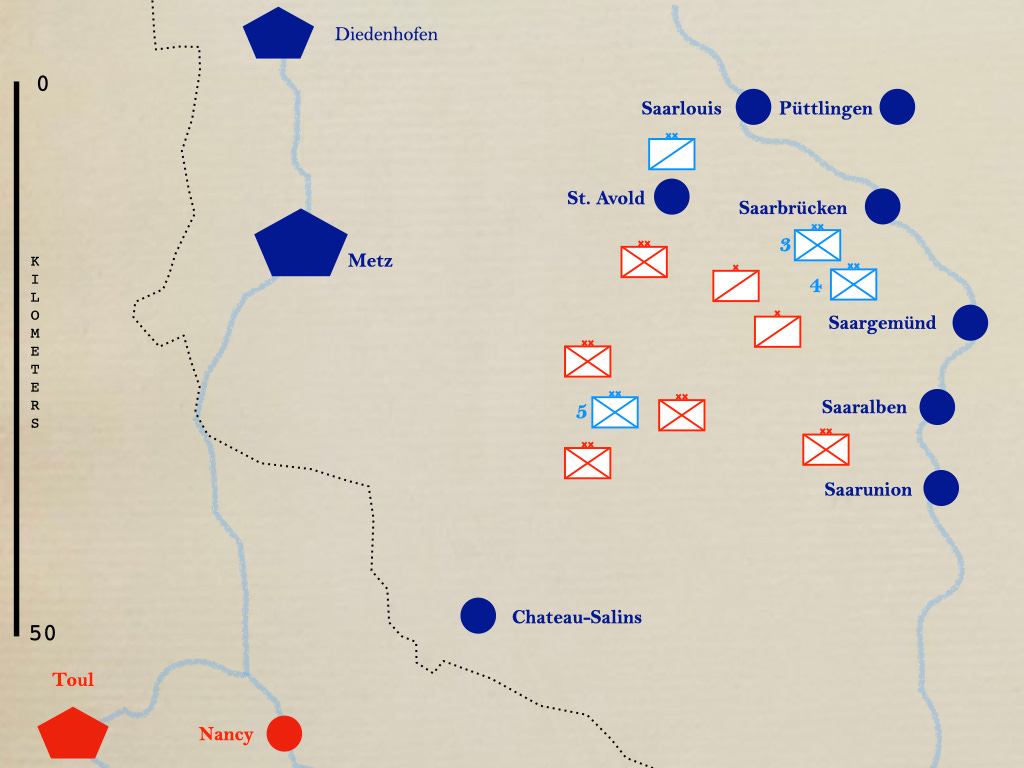Parseval's Quest (Second Solution and Epilogue)
A Decision Game from 1893
This is the fourth (and last) post in Parseval’s Quest, a decision game based on a problem that Count Schlieffen presented to officers of the Great General Staff in 1893. If you haven’t done so already, please read the first three installments of this series.
Please note that the point of the game is not to replicate Count Schlieffen’s solution. Rather, it is to engage the problem as it is and, having done that, ponder the differences between your solution and those of others.
Count Schlieffen’s Solution
On 3 June 1893, the II Army Corps would outnumber the French 6th Army Corps in infantry battalions (39 to 24), cavalry squadrons (36 to 8), and field batteries (28 to 20.) In the opinion of Count Schlieffen, this advantage made it possible for II Corps to draw the 6th Army Corps into a trap.
Thus, he called for the withdrawal of the 5th Infantry Division towards the north (the direction of St. Avold), the assembly of the cavalry division in the vicinity of St. Avold, and the deployment of the 3rd and 4th Infantry Divisions southeast of St. Avold.
If the 6th Army Corps pursued the 5th Infantry Division, it would soon find itself south of St. Avold, with the 5th Infantry Division to the north and the two other Bavarian infantry divisions to the east. At that point, the Cavalry Division would attack the rear of the 6th Army Corps, cutting its lines of communication and completing its encirclement.
In addition to setting the stage for the destruction of the 6th Army Corps, this maneuver would also ensure that the farmers delivering horses and wagons to the German supply officers would be able to do so far from the scene of fighting.
Many of the officers working through this problem expressed concern for the need to protect the arrival of the two German army corps en route for Saaregemünd and Saaralben. Count Schlieffen, however, believed that the infantry companies guarding the railway stations in those towns would suffice to protect the detraining of other elements of those army corps from raids conducted by small numbers of French cavalry squadrons.
Commentary
Readers familiar with Count Schlieffen and his famous fondness for double envelopments will not be surprised by his solution to the problem. What is surprising, however, is the degree to which Count Schlieffen was willing to depart from reality in order to make such a maneuver possible. That is, rather than depicting the 6th Army Corps as it was in 1893, with five infantry divisions and two cavalry brigades - he described it as a standard (two-division) French army corps of the day.
The actual 6th Army Corps had sufficient forces to devote three divisions to the destruction of the 5th Infantry Division, while retaining sufficient forces to hinder the deployment of the rest of II Army Corps and occupy the towns where the other two German army corps were scheduled to arrive.
Source:
Alfred Graf von Schlieffen Die Taktisch-Strategischen Aufgaben aus den Jahren 1891-1905 (Berlin: E. S. Mittler, 1937) pages 17-22
Löbell's Jahresberichte über das Heer-und Kriegswesen (1893) page 62










To say nothing of the risk that the additional formations the enemy is expected to send in (per the prologue) may be hot on the 6th's heels and be in a position to give the cavalry a very unpleasant day. Or that the 6th might, on reaching St Avold unopposed, regroup and fortify the position to deny us the opportunity for an encirclement (if they're not expecting us to attempt an encirclement they've somehow forgotten we're German). Seems a high risk/low reward solution, even against an enemy who've been weakened for the purpose of the exercise!
I'm still for using snipers, flying cavalry, and random artillery fire to lure the enemy to place where they can be hit from one side by the snipers, and the other by the artillery, leaving the cavalry to do what it does best and cause confusion and devastation to regiment of foot.